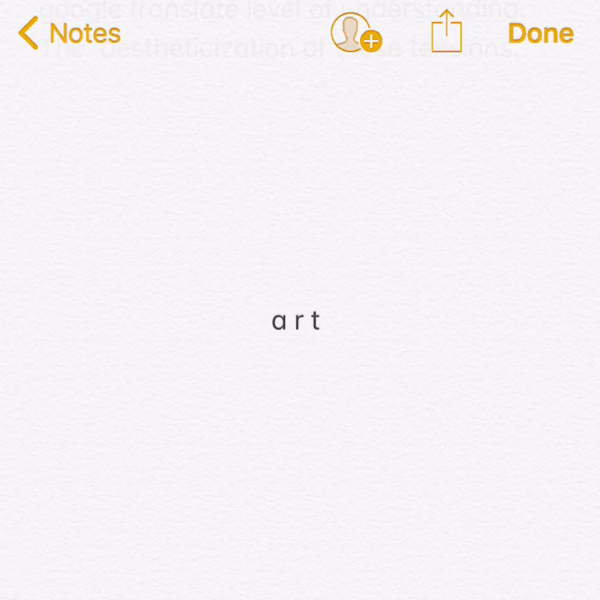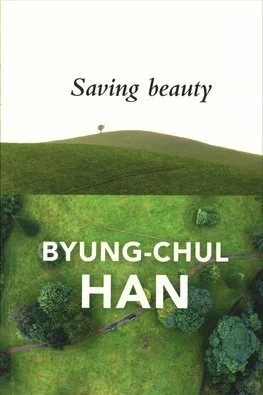a r t
I’ve written previously on little a art, a conceptual tool to describe Art’s inability to persist as a useful category. Art may have exceeded the limits of its capacity and can’t be used without compounding qualifiers, contextualization and modifiers with any degree of accuracy. I had written little a art exists in a quantum-like state of potentiality waiting to be activated by configurations of subjects, objects and times. After de-capitalizing it I’d like to evolve, or diffuse this thinking further and offer a r t as a lexical signifier of this thinking. The space between the letters allowing for multiplicities of subjects and conditions to determine its ontology and significance. Some examples in the comments.
Social media mention 9/19
The Long Take
If one concedes the modernist shock of montage and the postmodern schism between lived and global time create conditions that resist contemplation, Lutz’s history of the durational in cinema and its correlates, expands ‘the long take’ as a philosophy practiced through the varied screenscapes of contemporaneity in service of restoring wonder.
With thoughtful readings of Calle, Tarr, Alÿs, Weerasethakul, Kiarostami, Cardiff and Bures, Farocki and others he traces a history of artists concerned with a kind of image making that opens broad, poetic, contemplative horizons. I particularly love the penultimate chapter (Un)timely Meditations that puts Kiarostami in dialogue with Weerasethakul against the backdrop of 24/7 neoliberal time and its media flows.
If at times it feels Koepnick is overly insistent on the primacy of his long take thesis, it’s allayed by being accompanied by a generous and insightful guide through many interesting contemporary works of moving image. Much appreciated and recommended .
Social media mention 2/20
Thoughts on Saving Beauty
Byung-Chul Han
My first thought is that beauty is apprehended according to each relation. Saving Beauty brings forward a consideration of what could constitute beauty’s character. Han submits our smoothed over, hypermediated aesthetics of frictionless positivity obfuscates the sublime beauty that shakes us to our unknowable and deindividuated place in eternity. The velocity of the consumptive present forecloses on a slow beauty of recollection. Sociality and the ritual or cultic use of objects has been consumed by spectacle, museology and the market. Digital culture, with its unrelenting flows of hollow affect and lonely narcissism erodes our capacity to experience these heightened states of beauty and disalienation.
Han seems to disappear behind his pantheon of great European philosophers and it’s mostly through negation or triangulation that I locate examples of the affirmative at the personal level. For me, surfing at sunset comes to mind as a ritual where I become completely taken by beauty and connection with something akin to the eternal. I think of celebrating with community, eating and dancing together—moments where the feeling of being a precarious individual dissolves into an expansive belongingness to a shared existence. I think of long quiet walks through the woods and by the ocean, where a simple presence of mind reveals a shuddering beauty.
Han’s thinking strikes me as decidedly rooted in the predigital and I feel a bit more nuanced and undetermined with my relationship to emerging technologies. I’m observing my faculties of memory and perception evolving with these epochal shifts alongside my daughter’s internet endemic development. A video loop of Agnes in a mossy tree, bathed in warm golden light with her quiet chirping voice and softly windblown hair may be my madeleine dipped in lime-blossom tea.
Edward Said offers that lateness in style exhibits a surrender of knowability and abandon of resolution. This seems compatible with Han’s beauty. The book concludes—at least in my reading—with a sentiment I share: art, at the best of times, can develop sensitivities to appreciate what is always already there, and in abundance.


